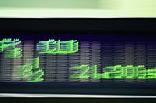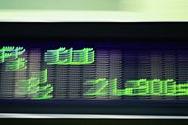
 |
|
| Financial Terms | |
| debit |
|
Information about financial, finance, business, accounting, payroll, inventory, investment, money, inventory control, stock trading, financial advisor, tax advisor, credit.
Main Page: financial advisor, credit, tax advisor, finance, investment, stock trading, money, financial, |
Definition of debit
debitFunds which have been deducted from your account. The opposite of a debit is a credit. DebitOne side of a journal entry, usually depicted as the left side.
Related Terms:Preauthorized electronic debits (PADs)debits to its bank account in advance by the payer. The payer's debit cardA card which enables you to directly access your bank account when paying for purchases. So instead of paying in cash or with a credit card, a debit card allows the specified amount of the purchase to be electronically debited, or withdrawn, from your bank account. See Interac Direct Payment for an explanation of the actual procedures that you follow at the point of sale (POS) terminal to use your debit card. debit memoA record of the funds which have been debited from your account. Cash receipts journalA journal used to record the transactions that result in a debit to cash. Subsidiary ledgerAn accounting record giving the detailed transactions in an account; the subtotals of the debits and credits are posted to the control account maintained in the general ledger. It helps to keep the general ledger free of clutter. T accountThe format used for a general ledger page. The name of the account is put on the top line, and a vertical line is dropped from the top line (hence the "T"). debits are recorded on the left side, and credits are recorded on the right.  accounting equationAn equation that reflects the two-sided nature of a underapplied overheada debit balance in the Overhead account at the end of a period; when the applied overhead amount is less than the actual overhead that was incurred Journal entryThe formal accounting entry used to identify a business transaction. The creditOn your bank statement, 'credit' represents funds that you have deposited into your account. The opposite of a credit is a debit. EFT (electronic funds transfer)Funds which are electronically credited to your account (e.g. direct deposit), or electronically debited from your account on an ongoing basis (e.g. a pre-authorized monthly bill payment, or a monthly loan or mortgage payment). A wire transfer is a form of EFT. Interac® Direct PaymentInstead of paying with cash or a credit card, Interac Direct Payment allows you to pay for your purchase with a debit card, such as your bank card. The amount of the purchase is electronically debited, or withdrawn, from your bank account (see debit card). Interac systemCanada's bank machine and electronic debit system. If you use your bank card at a bank machine which displays the Interac symbol (and that bank machine is not your bank's machine), you will be charged a fee. online bill paymentThe electronic payment of a bill via the Internet. The specified amount of the bill is electronically debited from your account. point of sale (POS)The terminal at which a customer uses his/her debit card to make a direct payment transaction. See also Interac Direct Payment.  pre-authorized paymentA system where funds are electronically debited from your account on a specified date by a financial institution (e.g., bill, mortgage or personal loan payments) or perhaps an insurance or an utility company. Related to : financial, finance, business, accounting, payroll, inventory, investment, money, inventory control, stock trading, financial advisor, tax advisor, credit. |